This is a challenging age, doubly so for anyone who is connected spiritually with the living earth and who cares deeply about non-human life. The Fourth National Climate Assessment, released towards the end of 2018, presents a dire picture for the future. This isn’t the only recent report from governing bodies globally–report after report continues to paint a clear picture of what humanity is doing, and what we need to do to change. And yet, it seems to be business as usual.
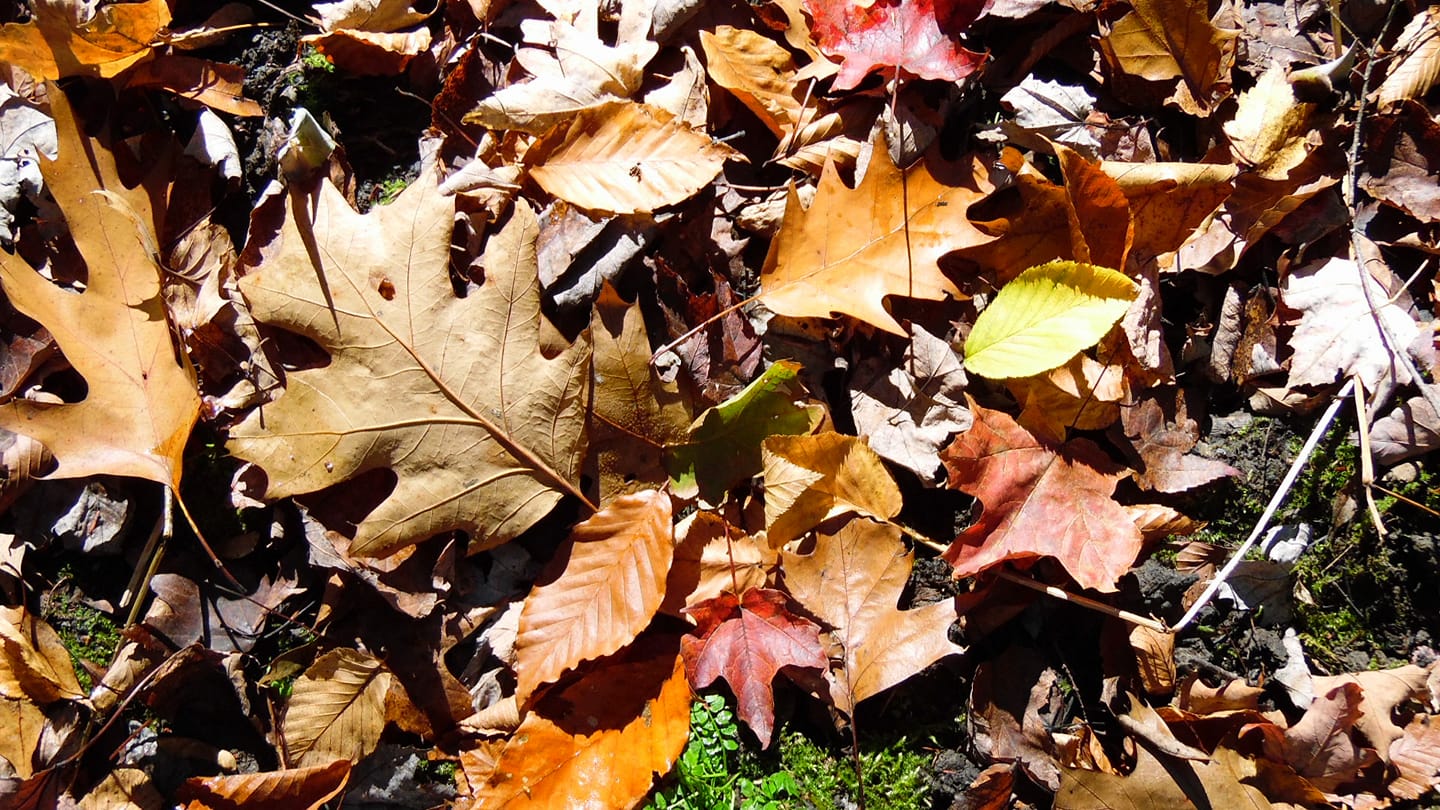
When I talk to druids about their thoughts about this present age, there seems to be a few ways to think about it.
First, the glass half empty approach is feeling extremely demoralized, looking at climate change reports and long-term forecasts and seeing the continued inaction on behalf of world leaders. The glass half-empty approach may also leave us feeling that nothing we do now matters and may wonder what the point of even trying is. Druidry for them is a means of coping, a means of connecting, even if they think it may all go down the drain.
Second, the glass half full approach is feeling concerned about the state of the world but also recognizing the great potential in this age–we must adapt or not survive. One of the core permaculture design principles is “the problem is the solution” meaning we can see into the nature of the problem and in seeing it, we can find solutions within it. These eternal optimists feel that we can be the solution, and it’s just a matter of finding out what to do and how to do it, and doing it well.
Finally, the third approach is ignoring the glass altogether: those who choose not to think about what’s happening large-scale, and instead, respond by individual and local action and what they can control. These druids are fed up with what is happening broadly and pay it no mind–but care deeply about what they can control and work to live in a way that honors and cares for all life.
There are probably more responses than I named here (and if I missed yours, please share it!). Regardless, living in the 21st century is an incredible challenge for druids and any other practitioners of spiritual paths where nature is sacred and revered. The questions that I keep getting asked, and that I keep asking myself are: What does druidry do for us in the 21st century? What does druidry offer the future? How can we become good ancestors, and create a world that is safe, vibrant, and stable for our descendants?
I don’t profess to have all of the answers, by any means. But I do have thoughts I can share. I’ll tackle the first question above in this week’s post and the second question in next week’s post.
What does druidry do for us in this age?
This is a complex question that requires a number of different answers. On one hand, we have to look at what it does in an individual’s life–how it supports an individual’s spiritual practices. We also have to look at what it does to the world around us, ecologies and communities. Finally, we can look at larger paradigms that it challenges and helps us replace, more broadly. Thus, in this age, it works on at least three levels: the level of the self, the level of the land, and the level of the community.
The Self: Tools and Practices. In my work as Archdruid of Water in the Ancient Order of Druids in America, I see a lot of applications from new members. As part of our application, people need to write a letter that explores what encouraged them to join AODA, what made them come to druidry, and what they hope to gain. Most of them have key similarities: the need to reconnect with themselves through a spiritual path, the need to connect with nature, and the need to find balance in their lives. These needs bring me to one of the core gifts of druidry: helping us live in this age fully, powerfully, and sanely.

Modern western culture, particularly here in the USA, has discouraged many things: creative practices, being outside, having any kind of thoughts or an inner life, being curious about the world. Druidry offers people a way back into these very human and fundamental practices. Druidry is ultimately a connecting practice. This includes our connection with nature through the ovate arts, our connection with core spiritual practices that sustain us and allow us to cultivate a rich inner life through the druid arts, and our connection with our creative spirit through the bardic arts and the flow of Awen. Druidry offers us tools, strategies, and powerful metaphors to help us adapt, reflect, and ground.
Again, in my role in AODA, I get to read a lot of people’s reflections at the end of their coursework. It’s amazing to hear just how much a single year of druid practice changes them: their healing from past trauma, their deepening appreciation and care for the natural world, their cultivation of a rich inner life, their cultivation of a creative practice. These kinds of things get to the heart of what a spiritual practice can, and should be, for each individual–a way to connect with themselves, their creative gifts, and the world.
Tools and Practices for the Land. Druidic practices don’t just benefit us as individuals; they benefit the world around us. One of the great challenges of our age is that humans are radically disconnected from nature; our food comes from somewhere else, our products come from somewhere else; we don’t know the names of plants or animals in our local ecosystem, we don’t know what a healthy ecosystem looks like. We could not survive in our ecosystem without modern conveniences in place, as our ancestors once could.
Through learning about nature, through nature study, wisdom, and experience–we learn how to be in nature. Once you begin seeing nature as sacred, you treat it as sacred. This manifests in so many diverse outward actions–we learn how to live more caring lives that support rich ecology and diversity; we learn how to nurture and tend the lands around us. Druids plant trees, tend gardens, do river cleanup, convert lawns to wildlife sanctuaries, and so much more. Druids make lifestyle changes to reduce their impact on the living earth and help sustain life. Ultimately, druidry takes us from potentially indifferent to knowledgable and connected with nature–and that helps us do good in our land, rather than cause harm. This change on our inner selves has outward results that support our broader ecosystems.
What can druidry offer the future?
Druidry helps individuals and those individuals can make some impact on ecosystems–but what about what is happening broadly? While the glass is half full and the local action readers are probably nodding and smiling with what I’ve written above, my glass half empty reader is probably reading this and saying sure, that’s great, but we still have an unsolvable predicament on our hands. And to this, we begin orienting ourselves not only to the present but to the future.
As druidry develops in the 21st century, I think it will inherently look differently than it did in the 18th, 19th or 20th centuries. It’s a personal spiritual practice, yes, but it’s also an alternative philosophy–druidry is in the process of developing new mental models for living and being and interacting in the world. Let’s look at why this matters, and the power it holds.
The Systems Thinking Iceberg Model offers us a way of understanding how change happens, and at what level change happens. This model suggests that if we want to change behaviors and actions, we must change the underlying mental models–the paradigms we live by. In this model, the top of the iceberg is events–things we react to, events that happen. That’s what is sticking out of the water, what we can see. So something occurs, and we react to it. A lot of people get stuck here–reacting to events that occur, not realizing that most of the iceberg (the cause of the event) lies under the water. The second layer down, just below the waterline, are patterns or trends. These are the series of events that are connected over a period of time and form larger patterns of actions and events. We don’t always see the patterns, but they are often there. The third layer is the underlying structures: physical world, organizations, policies, rituals (in the societal sense). These are the things that govern and support a lot of patterns, and thus, a lot of events. These are also the structures that make it detrimental to engage in certain kinds of activities (such as going fully off-grid).
The layer we are most concerned with today, however, is the final layer–that which underlies all else. This is the layer of mental models: where ideologies, attitudes, beliefs, expectations, values, and myths reside. These are the stories we believe and the stories we tell ourselves, both as individuals and as cultures. These mental models drive larger structures in society as well as individual actions. These are the myths we live and die by. If you want to change action, the mental models themselves must change. And here’s the thing: right now, western culture has some incredibly destructive myths: to individuals, to communities, and to ecosystems.
So what does this have to do with druidry and the future? And my response is — just about everything. Druidry isn’t just a spiritual path for individuals in the here and now. Druidry is a way to change the world. When individuals take up nature spirituality as a path, the practices lead them to shifts in thinking–to rethink and reframe mental models.
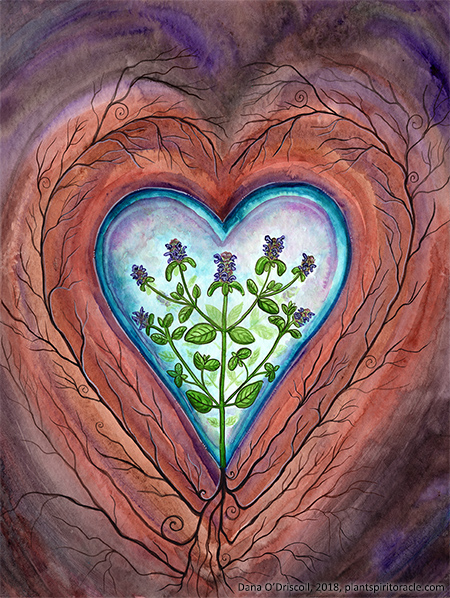
The Myth of Progress vs. the Cycle. One of the core arguments that John Michael Greer has made about industrialization is that the myth of progress is a national, cultural religion (see Not the Future we Ordered, among his other writings). The myth of progress insists that growth must happen always (economic growth, technological growth) and that progress will forever continue. That is, the idea of progress is so central to the way that humans think and act, and the decisions that we make, that this paradigm drives nearly everything else. The myth, like all good myths, is rarely questioned: to grow is good, and not to grow is bad. A housing development is progress over a forest. The myth suggests that humanity has progressed from the stone age to today, with today being the pinnacle of progress, and tomorrow being even better. This myth also asks us to value efficiency, expediency, mechanization, and standardization.
Druidry asks us to confront this myth. Lessons of nature, of the wheel of the year, of the seasons, teach us that the world doesn’t work in a straight, ever-upward moving line. The land works in a cycle, with seasons of famine and of plenty, with light and dark times. Nature’s lessons offer us key ways of re-orienting our own philosophy away from the destructive myth of progress and into something that is more sustaining.
Infinite Growth vs. Balance. Tied directly to the myth of progress is the myth of infinite growth. The idea that all growth is good, and the only way to have a stable society and stable economy is by growing. This is embedded in any discussion of modern economics, and certainly, is a driving force. Edward Abbey wrote, “Growth for the sake of growth is the ideology of a cancer cell” and this very much rings true.
Druidry teaches us differently. Nature is certainly about growth, but like everything else, it is growth for a season. Nature teaches us that limits are real, and necessary, and that growth and limitation are always in balance. If trees grew too tall, they would blow over. If the summer never ended, pests on the land would grow and multiply to great numbers, harming plants. Nature spirituality teaches us the lesson of balance.
Harmful consumption vs. Humans as a force of good. In the permaculture film “Inhabit” permaculturist Ben Falk talks about the challenge we face as humans who care about the land. So many of the things we buy, the narratives we hear, suggest that we should do “less harm.” As though the only thing we can do is harmless, or be a little better than we were before. But, as he argues, if you follow this thinking to its logical conclusion, it almost seems better if we weren’t here at all, if we had never been born, or that the best thing we could do is end our lives rather than keep polluting and consuming. This, of course, makes us feel guilty just for inhabiting our earth, for going about our daily lives. I agree with him in that this thinking is extremely problematic because it defines our role only in a damaging sense.
Druidry, and ecological approaches like permaculture, offer us an alternative perspective: we can interact with nature in many other ways–we can be a force of good. Through tools of both spiritual action and physical action, through the head, heart, and hands, we can regenerate and heal our lands.
There are more paradigms than just these that druidry confronts, but I think these three are a good starting point. To go back to the iceberg metaphor, we can see how what happens (events) and patterns surrounding what happens are supported by underlying structures. But those structures exist ultimately because of mental models–that which we think, believe, and hold sacred. If we can change the mental model–we change everything else.
What will druidry do for our descendants?
The mental models that have driven this world, particularly, the western world, into the 21st century are failing. They are failing humans, non-human life, and every ecosystem on this planet. And frankly, given how destructive they are, they need to fail. We are quickly approaching the time when a lot of people are going to be seeking new mental models. We are already seeing movement in this direction–the decline of traditional religions and the growth of ecologically oriented religions, the growth in other kinds of ecologically-based thinking– it’s already there. We’re seeing this movement in the youth of many countries. The paradigms we learn from nature are being shared in many nature-oriented practices and communities: balance, wholeness, integration, connectedness to the land, cycles–lessons from nature.
If we can rewrite the culture’s mental models and paradigms using lessons of nature, and if that new myth can become a driving force, all of society will change as a result of it. And here’s the thing–people are looking for these kinds of new ways of thinking, doing, and being. The mental models, rooted in nature, can offer us the next paradigm–the next society we build, one that is in line and honors nature and all life.
As we grow in our understanding of what this tradition is now, and where it is heading, I believe that we druids are the forerunners of so much change. Humanity will either have to adapt and develop more ecologically sensitive models, or go extinct. Think of us druids like the forerunners of that change. This is the gift we offer our descendants–the mental models that precipitate new structures, patterns, and actions in the world.
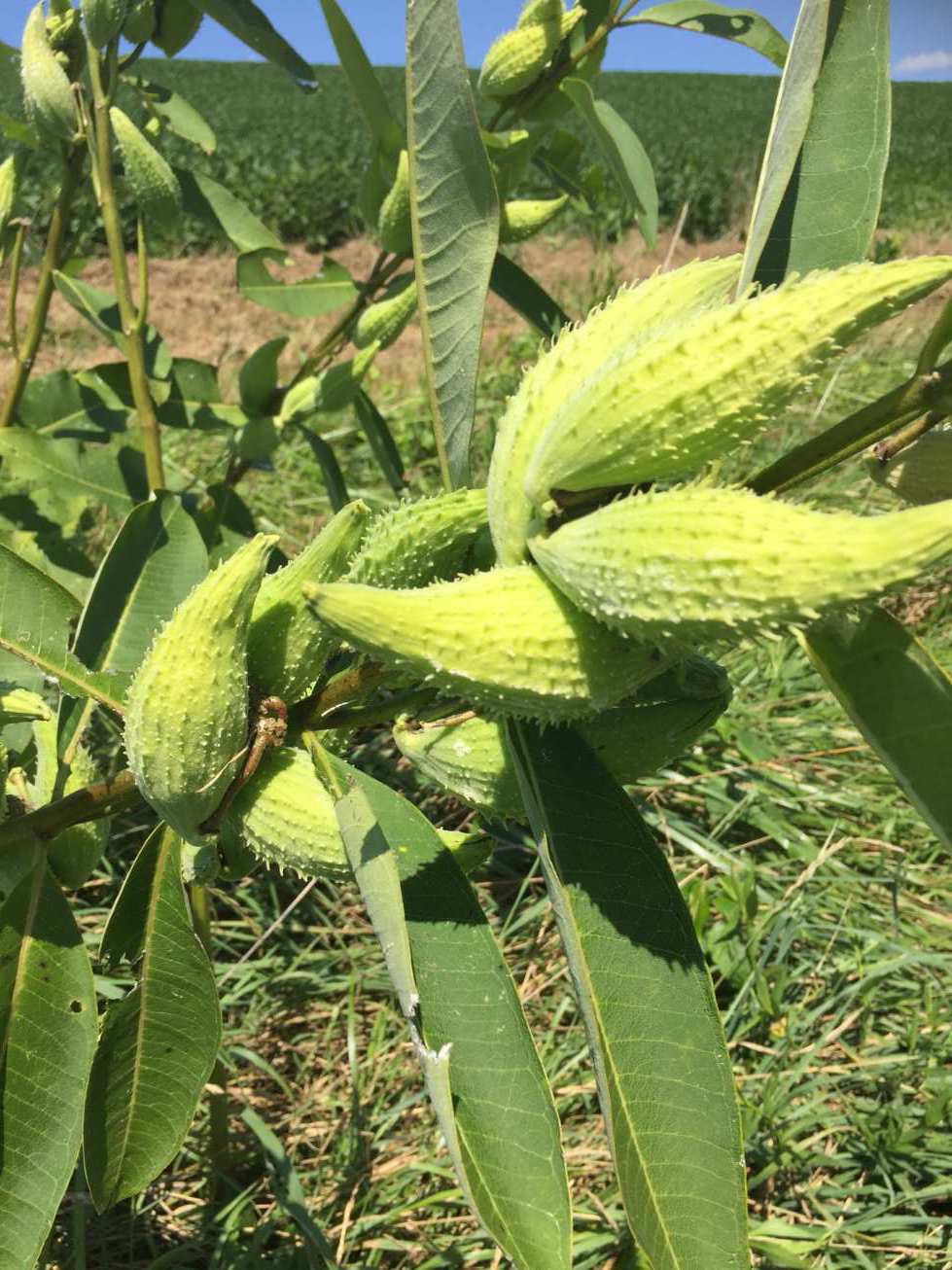
The Road Forward
As I’ve shared before on this blog, druidry as a spiritual tradition is a response to our age, and through the ages, it has always been such a response. Revival druidry began at the dawn of industrialization, responding to that day. Modern druidry has gained speed as our ecological problems have increased. Revival druidry saw the beginning of industrialization, and I honestly believe it will see us through to the end of it. For those of us in the 21st century–druidry is our response to today. And what we offer our descendants, then, is hope.
What we do today will help shape what our tradition–and our world–looks like tomorrow. Today’s practitioners have much to contribute to this conversation–What are we currently doing? What will we do? Who will we become? I would love to hear your own thoughts on what druidry–or other earth-centered spiritual practices– do for you, how they help, and what potential it may have for us as we pave the way for the future.
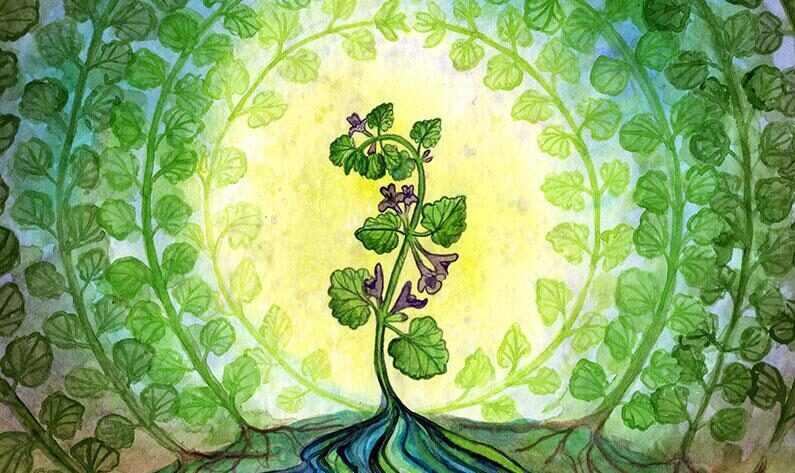

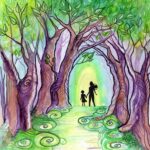
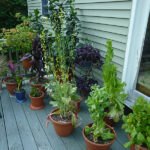
Reblogged this on Paths I Walk.
“If we can rewrite the culture’s mental models and paradigms using lessons of nature, and if that new myth can become a driving force, all of society will change as a result of it. And here’s the thing–people are looking for these kinds of new ways of thinking, doing, and being. The mental models, rooted in nature, can offer us the next paradigm–the next society we build, one that is in line and honors nature and all life.”
Good luck with that (if you believe in luck); cultures and paradigms have been trying unsuccessfully to do just that for many millennia, since mankind lost consciousness of reality. It was civilisation – where none had been previously needed – that started the curse-of-death; because, before the intrusion of civilisation, the whole of Eden (now Earth) embraced the reality of dominion by life. Nowadays nobody remembers what life is, how it works, or its purpose and meaning; hence the continuing struggle of each new generation to make something of life without realising that they’re committing slow suicide, and taking the planet with them, if it (their self-centredness) doesn’t stop soon.
Oh, we think we’re so clever; or do we? What does it all amount to – science, technology, revolutions – what does it all come to compared with what life does in just nine Luna months, between conception and birth? And from that point of incarnation the parents and teachers take over, and decide what life should do thenceforth; so every new generation ages, and dies in less than a century, without anyone maturing to full consciousness; what a waste!
Life brought us to where we are now, thank you very much; why, then, don’t we let life finish the works-in-progress, and complete our evolution to maturity in perfect patience? If any of this rings true for you, please be in touch; we have much to discuss, because you are quite right in summarising we’re at a critical turning-point at which the restoration of man, and the balance of our planet’s resources may – or may not – recover unless there is a change in the content-of-consciousness of an honest few who will assume responsibility for letting life lead. I look forward to hearing from you. All we need are a few sincere focal points around the globe to continue the work for which the Great Pyramid was designed and built, but then misused by the arrogant Pharaohs; we cannot afford to mess-up like that again.
Regards, Peter
________________________________
That’s for your comment, Peter! I’m not sure all of what you are saying, but I can certainly talk a bit more about why I think we’ll see some of these shifts within our lifetimes with regards to old and new paradigms. The myth of progress has run its course. Where I am, deep in the rust belt, people no longer have faith in anything. They know things aren’t going to improve, Trump isn’t going to magically make the steel mills and coal mine start back up. Even your common people know things are worse for their children than they were for themselves.
At the same time, we see ALL of these movements–not just one, but many–towards sustainability, ecological awareness, and so on. Its not one group, like druids, but large groups of many different people. We see it in nearly any “alternative” movement today–a growing conciousness about our world and our place in it, and we are starting to see these conversations go more mainstream, be written into laws. They are still small steps at present, but these voices are growing. Perhaps one of the most telling signs is not the old, but the young, who are leveraging lawsuits on behalf of the future.
In the US, we saw this same kind of movement win the 1970s, but there’s a big difference now–we know the results of limitless growth. Even the UN understands it. Things are changing, and the new paradigm is being written. The real question for me is–can we shift fast enough to make a difference?
Thank you Dana! This is another excellent post. Your words feed this Druids soul. You are preaching to the choir with me so to speak. I agree that we need a paradigm shift to make the world healthy again. Druidry has helped me transform my own thoughts and my actions and I hope it will do so for many others.
I think it will! And the good news is that we, as druids, aren’t alone. A lot of movements are in the same direction. I know what druidry and permaculture have done for me, and I have faith, and hope, that we can make this shift. Blessings and thank you for reading!
I see the same trends in druids that you identified. Regardless of stance, I don’t see a lot of people who believe in their own sense of agency. More importantly I don’t see a sense of the power of collective action. The focus is on the individual and individual action — and that is a strategy that guarantees failure. Systemic problems need mass actions and a laser focus on what needs to be changed. Disparate random acts that aren’t followed up aren’t going to cut it in an extinction emergency. This failure to come together is creating a situation where a lucky few might make it through but many will be left behind.
Agency is at, perhaps, an all time low. Given that, individual action is one of the only things people feel they can directly control. It makes sense; why its the focus of so many people. Yet, I think, coming together for change is the only real way forward. I think there’s hope when we start putting aside our differences, talking, communicating, and more. But I also wonder what we can do collectively, particulary as a large group of 30,000 druids worldwide–that’s a fairly large number!
Changing systems is the way forward. Here’s an off hand idea. If 30,000 druids did a sustained letter writing campaign for even a month to their local grocery stores requesting they replace plastic bags with paper bags we could make a big difference. Not just in our homes but in all the homes of all the people who shop at that particular store. Everyone should use their own reusable bags but sometimes people do forget to bring one along. Better to use paper that composts gently back into the earth than plastic. If 30,000 druids joined in a sustained letter writing campaign like say writing to Coca-Cola, Pepsi Co and Nestle (the top 3 brand names found in ocean plastic clean-ups) demanding they eliminate the use of single use plastic bottles we would be heard. We would also be promoting the idea of druidry to the mainstream.
Reblogged this on Rattiesforeverworldpresscom.
A very interesting read! I was nodding a lot, because I feel we need to step away from this myth of growth. Unfortunately we are locked in certain path dependencies – mentally and technically. I think for druids and other spiritual leaders it is important to show people also the beauty of disconnecting, to be passive, receptive, to slow down, and maintain what we already have, and balancing work and rest. I am a student in environmental engineering as well a student of forest therapy, and unfortunately I struggle myself with the technology and still growth-oriented approaches and yang energy in engineering and my studies in forest therapy which calls for more yin every. I think it is about balancing both ideas, both yin and yang energies, if we want to make this turn feasible, despite all the path dependencies and lock-ins we have in the world.
That’s the problem, right? The entire system is self-sustaining and its hard to get out of the “growth” mentality. I see it too in my workplace, the need for constant growth, expansion, whatever that means. I like to think about alternatives to the work I do, and how me re-seeing it can help me with this paradigm shift. Thanks for your comment and thoughts!
Reblogged this on Stories from the Wood Wide Web and commented:
I recommend to read this and reflect together with the author. Unfortunately we, humans, are locked in certain path dependencies – mentally and technically. I also think for druids and other spiritual leaders it is important to show people also the beauty of disconnecting, to be passive, receptive, to slow down, and maintain what we already have, and balancing work and rest. I am a PhD student in environmental engineering as well a student of forest therapy, and unfortunately I struggle myself with the technology and still growth-oriented approaches and yang energy in engineering and my studies in forest therapy which calls for more yin every. I think it is about balancing both ideas, both yin and yang energies, if we want to make this turn feasible, despite all the path dependencies and lock-ins we have in the world.
Reblogged this on Enter the Grove and commented:
The path I’ve begun since reading this blog has been nothing but positive. Even if you aren’t one of the Oak Knowledge, I love reading the content. There are excellent ways to “live more green”
Thanks for the comment and reblog, Blaise!
[…] at The Druid’s Garden has an absolutely excellent article on Druidry for the 21st Century. How can Druidry help us navigate the complex environmental and social challenges of the modern […]
Thanks for the reblog!
The UN climate change report tells us we need to reduce greenhouse gas emissions by 45% by the year 2030, 11 years from now, to avoid just the worst (not all) of the effects of climate change and buy ourselves time to learn how to live sustainably, in balance with the Earth. What if 30,000 druids all became active in catalyzing their local and regional governments to develop sustainability plans that target achieving zero greenhouse gas emissions, converting to renewable energy sources, waste reduction including food waste reduction, electric transportation, plant-based diets, etc? What if we also did the same for the businesses we own or work for, the schools our children attend, the organizations in which we are active? What a powerful legacy THAT would be! This is an all-hands-on-deck moment in human and Earth’s history. The Earth is calling each and every one of us to teach and inspire humans to live in balance. Get your municipality to develop and enact a sustainability plan!
Exactly. These are the kinds of ways I think we can be thinking, doing, and acting. This is the kind of legacy that we can leave the descendants and all life!
[…] This blog and this short lecture about kinship from an Aboriginal Australian perspective are a reminder of the kinship relationship indigenous cultures traditionally have with animals, plants, landforms, and elements of nature. Aboriginal Australians and many First Nations in the northern US and Canada constructed totems (or tokens) as emblems of these relationships. (Image from here.) It’s a stark contrast to modern living, well said in a post of The Druid Garden’s Blog: […]